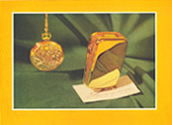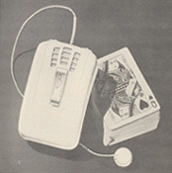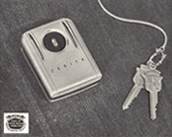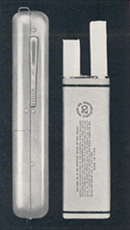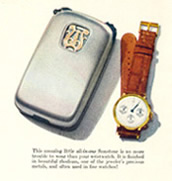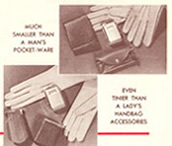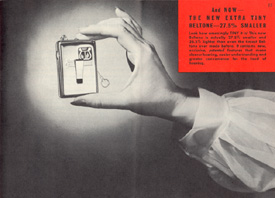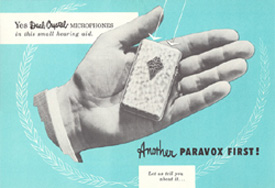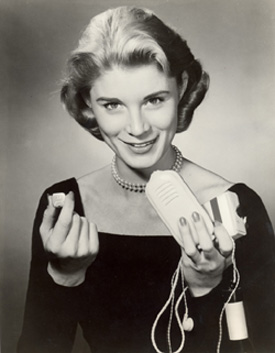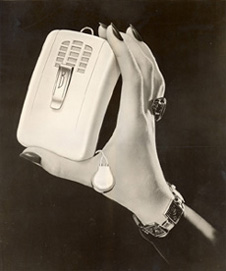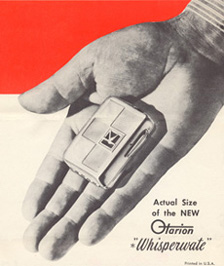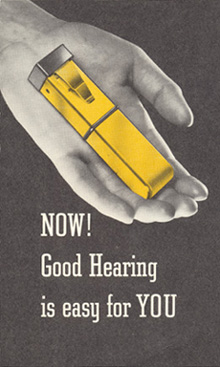Marketing of Hearing Devices
The 1950s was the golden era in the marketing of hearing devices. Marketing for hearing aids was focused on dispelling the perception of bulky hearing aids for the estimated six million hearing impaired individuals in the United States. With the technological advancement of the transistor in the late 1940s and the subsequent miniaturization of batteries, hearing aids became smaller and more powerful – enabling many hearing impaired individuals to potentially benefit from the newer hearing aids.
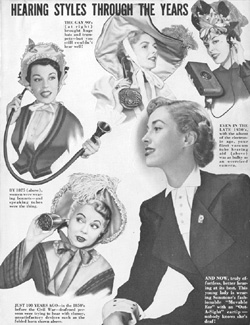 |
This advertisement from Sonotone shows the evolution of hearing styles from the 1850s to the 1950s. |
Courtesy of Sonotone |
Size was heavily emphasized in marketing of hearing devices to show the ease of use and portability of the new hearing aids. Manufacturers used everyday items such as watches, keys, matches, rulers and cigarettes for size comparison.
|
|
|
“Smaller than your fondest expectations . . .”
— Otarion “Whisperwate” promotional copy, 1950
The human hand was a great means of demonstrating size comparison.
And if using everyday objects did not help with size comparison, these advertising inserts based on actual sizes of hearing aids did the trick.
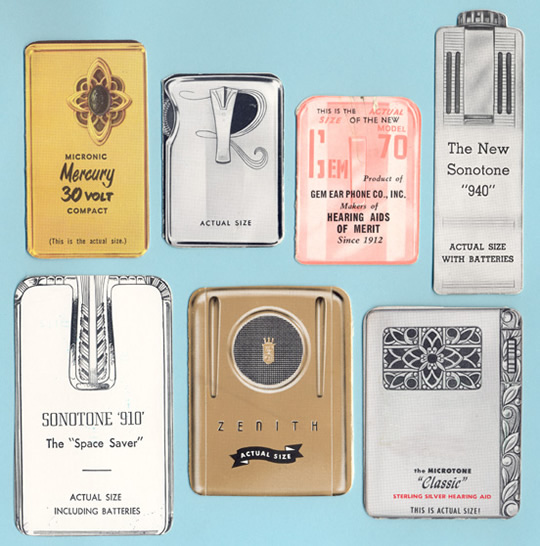
|
Promotional brochures courtesy of Sonotone and Zenith Electronics Corporation |
Names of hearing aid models reflected the size theme with names such as “Hidette,” “Secrette,” “Invisible Ear,” “Phantom,” “Midget,” “Hidden Ear,” “Unseen Ear,” “Thumbelina,” “Veri-Small,” and “Hide-A-Way.”
“It has not been many years since deafness and impairment of hearing occasioned ridicule and derisive laughter. The use of the old-fashioned trumpet provoked amusement, and some regarded the condition as a prelude to imbecility or senility. Therefore, it is little wonder that manufacturers of hearing aids today, bent on marketing their wares, make use of advertising with claims, sometimes implicit, often explicit, that ‘nothing shows,’ ‘that “one’s hearing is hidden,” ’ and that nothing is carried around that will reveal a handicapping hearing loss.”
— Council on Physical Medicine and Rehabilitation, 1951
Continued
<< Previous | 1 | 2 | 3 | 4 | Next >>

